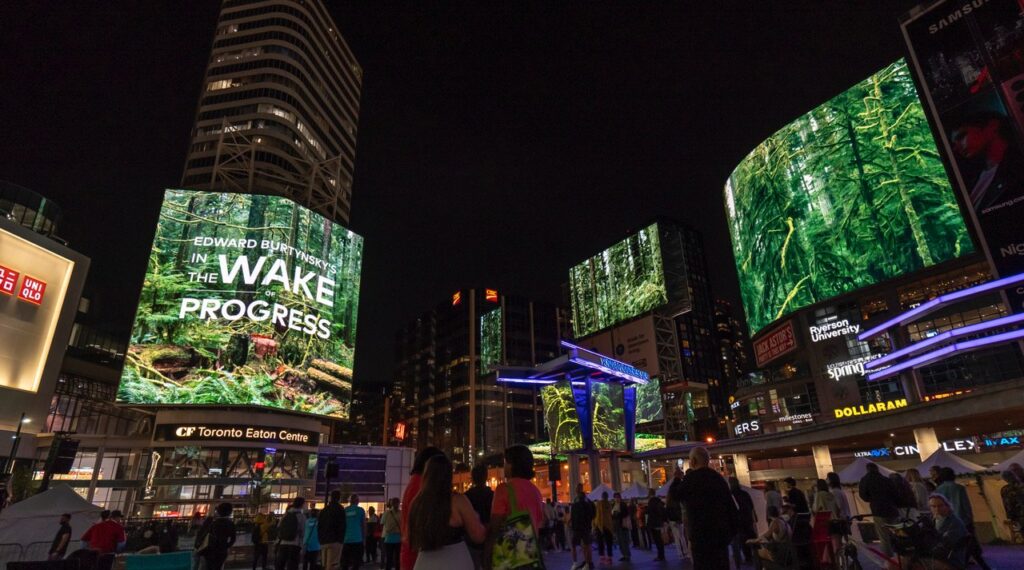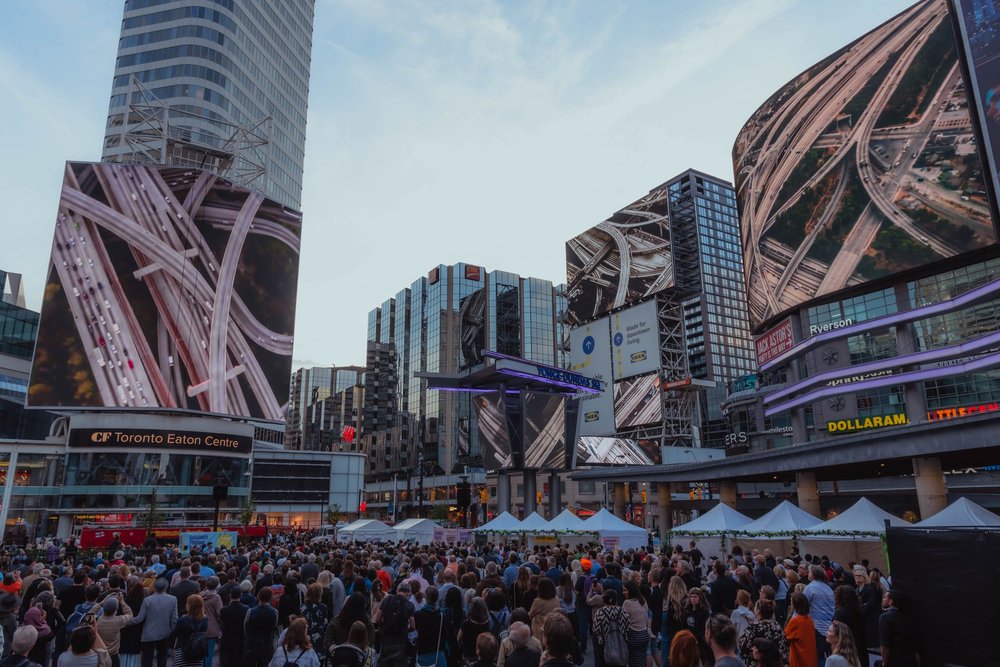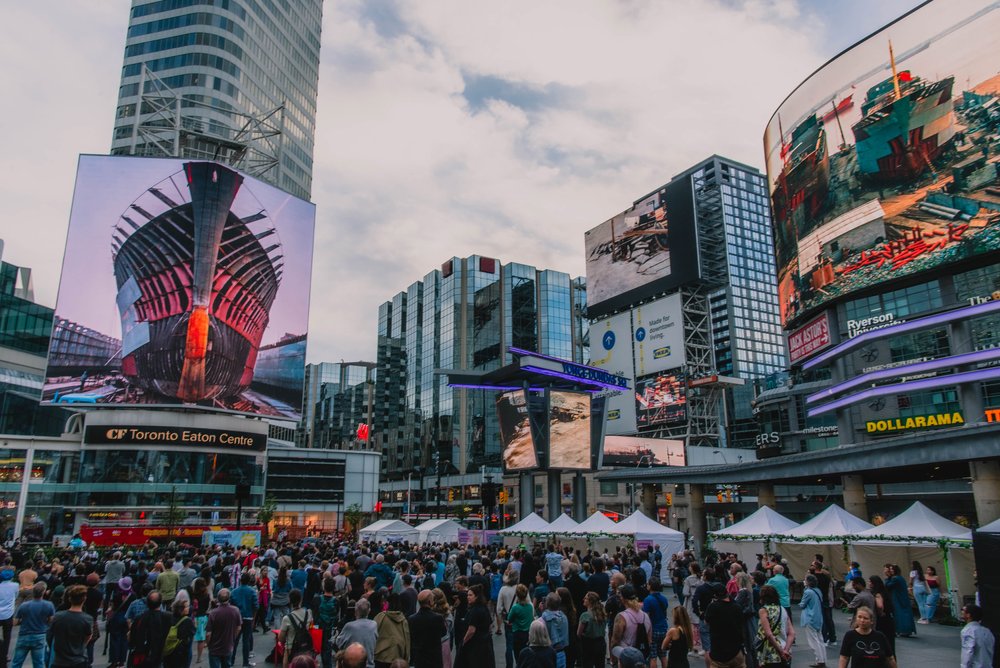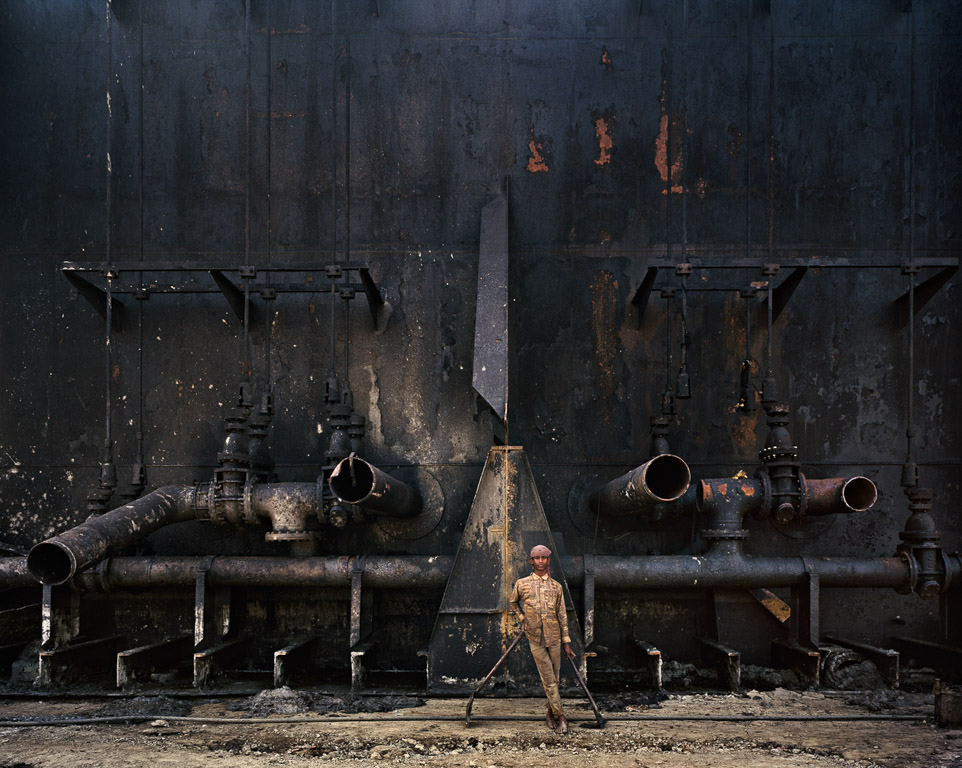The article is based upon a telephone interview with Edward Burtynsky
Edward Burtynsky brings an important message to us about environmental concerns through his photography. I watched the world premier of his work In the In the Wake of Progress and, like many in Dundas Square, was awestruck by the experience.
Burtynsky, one of Canada’s best photographers, grew up in the auto manufacturing centre of St. Catharines, Ontario. His father worked at General Motors, as did almost 10,000 other local residents. Burtynsky himself recalled working there for several years and trying to come up with ideas to increase productivity. He would later return to the plant when he discovered that one of the assembly buildings was being put out of service. As he commented, he found it best to shoot something he was familiar with.
In his early 20’s he also worked in the north of the province in an underground mine. He had a friend who worked in an open pit mine and Burtynsky recalled watching a blast in the open pit and being captivated by the power of the explosion and its impact on the earth. All these experiences would influence and help shape his photographic practice in years to come.
As a fan, I have followed Burtynsky’s work for many years, and so went to Dundas Square during the Luminato Festival (June 11 & 12, 2022) to view the presentation of In the Wake of Progress. The idea for this production was suggested by Naomi Campbell, the artistic director of Luminato in 2018. She pitched the idea for his work to be screened on the 22 screens in Dundas Square. Burtynsky started working on it by using his computer to figure out the way images would sequence and light up on the screens. It was set to debut in June of 2020 but the onset of the pandemic in March 2020 meant Burtynsky had more time to perfect the production. When asked about the contradiction of using these digital advertising screens that normally sell us products, Burtynsky mentioned that there was a jarring moment at 11 pm in the Square when the screens switched back to their usual duties. As Burtynsky said, going from the poetic to the sublime in a flash.
Over his forty year career he has photographed in many countries and locations where there has been a huge human impact on the environment. I was curious to find out if any single shoot has had a profound impact on him. Burtynsky mentioned the Shipbreaking series in Chittagong, Bangladesh, where he witnessed workers using welding torches to break down massive hulks of vessels with many layers of marine paint covering the hulls. The workers had no protective goggles or masks, or any form of health protection as they slowly disembowelled these huge vessels. He saw this as ‘the effect of globalization” — not minding where the “stuff goes to die“. He connected this to the fact that after the large oil spills, insurance companies decided they would only insure double-hulled vessels. So Burtynsky wondered what would happen with all these single-hulled vessels and he learned that they ended up in Bangladesh. His photographs are powerful, showing the contrast of the human scale next to these massive steel vessels and in most cases also surrounded and covered with oil from these tankers.
Shipbreaking #23, Chittagong, Bangladesh 2000
As a person of Ukrainian descent, Burtynsky has helped raise money for relief for the Ukrainian people through the sale of his prints. Like all of us, he is awestruck by the devastation in Ukraine. He had planned to visit but first COVID came along and then the war with Russia. He still hopes to go back one day.
More recently, Burtynsky visited Turkey where they were dealing with land erosion, and he was documenting and capturing a more positive action in dealing with environmental changes.
Though the In the Wake of Progress had its world premiere in Dundas Square but is to be presented as a ticketed event at the Canadian Opera Company Theatre on Front Street East. It will include a 22-minute screening on three giant 4K surround screens produced by Bob Ezrin (the producer of Pink Floyd’s THE WALL, among many others) with musical score by Phil Strong. Visitors will then go through a curated gallery of photographs and high-resolution murals, including new and never-before-seen images. The presentation includes ‘Change Station’ which tackles the question “what can I do now?”, as well as two-powerful augmented reality experiences.
Burtynsky is looking forward to this indoor production as his 4×5 camera prints come to life and remind us all about the toll we have had on this Earth. Burtynsky’s work has long addressed environmental issues through the production of documentaries and photography exhibitions but this recent work will reach an even larger audience and ask us what we can do to help treat our host, the Earth, with more respect.
Never at rest, Burtynsky has a new project this fall travelling to 11 countries in Africa. We can only look forward to what new adventures he takes us on and what his eye captures through the lens frame by frame.
Phil Anderson
Images are courtesy of the artist




